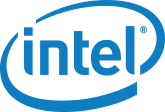Be present always in the minds of category consumers.
Advertising works largely by refreshing memory structures; occasionally it also builds memory structures and creates a preference or intention to purchase. Brands don’t need to worry about having a persuasive message, even when they have one, the message needs to be embedded within a framework of brand links and cues, salience and long-term distinctiveness.” 1
If we consider the two extremes–a highly branded ad versus a poorly branded call to action–the highly branded ad will be more effective in raising awareness thus driving long term sales benefits.

Consider Intel with its long-running “Intel Inside” campaign–an example of awareness-based communication. Most consumers wouldn’t know or care about the microprocessor their computer came with; however, the use of the “Intel Inside” brand assets, from the logo and jingle to the chip on the PC, made it incredibly salient.
1. Sharp, B. (2010). How Brands Grow: What Marketers Don’t Know. Melbourne: Oxford Press.
Action
Make your advertisements well branded and focus on raising awareness of the brand rather than the “spec” or product messaging. Sponsorships, display ads, outdoor, TV / video advertising and other “basic” awareness channels are very effective at raising awareness.

